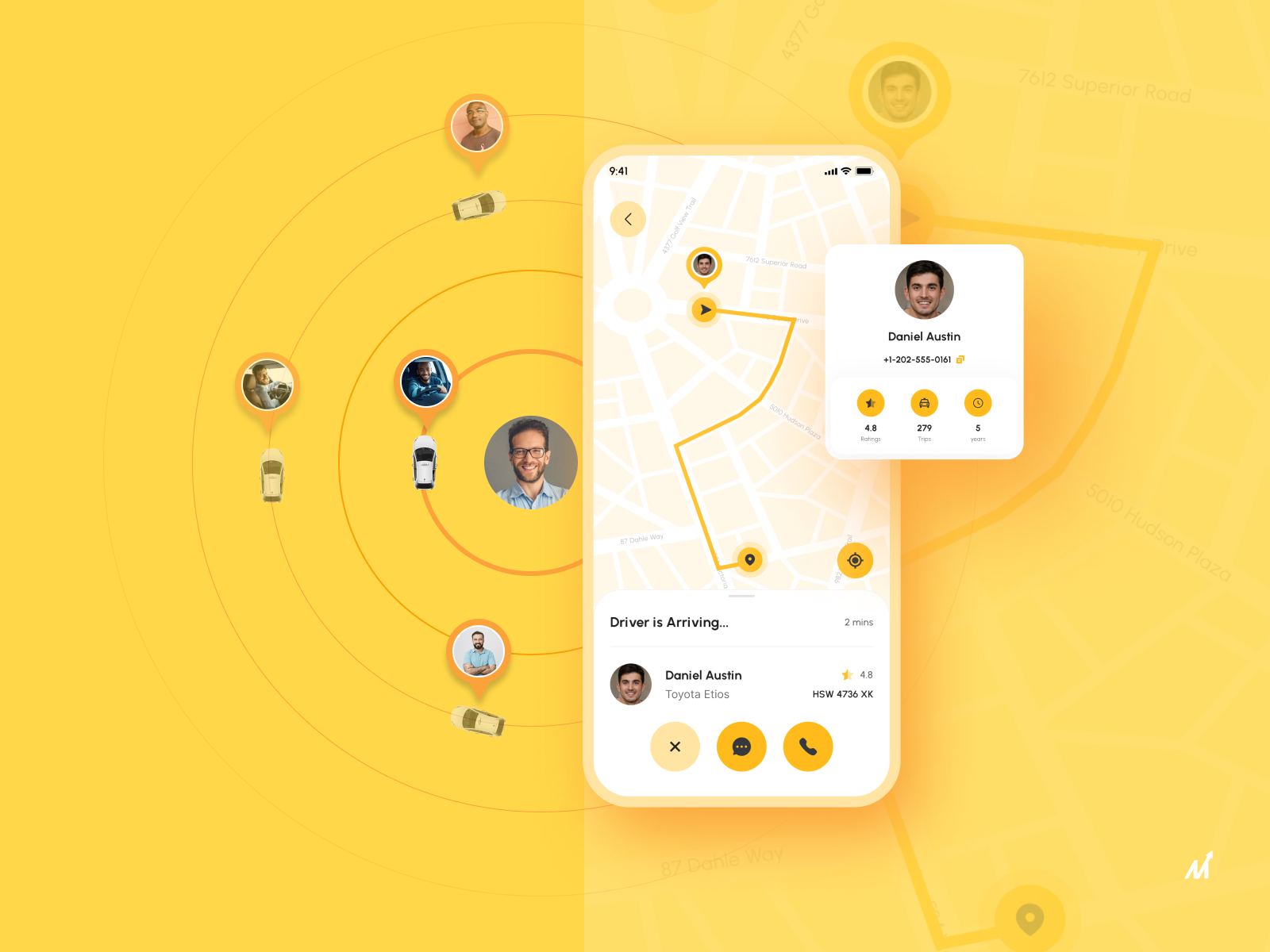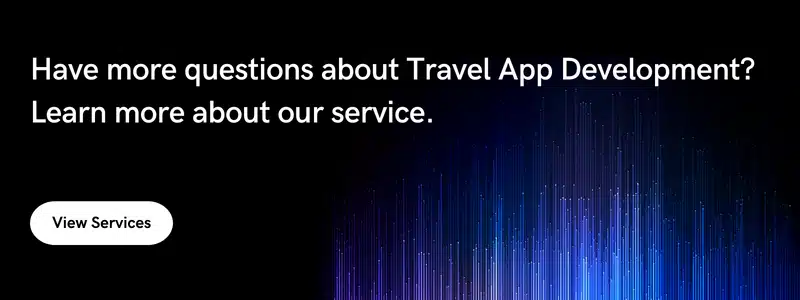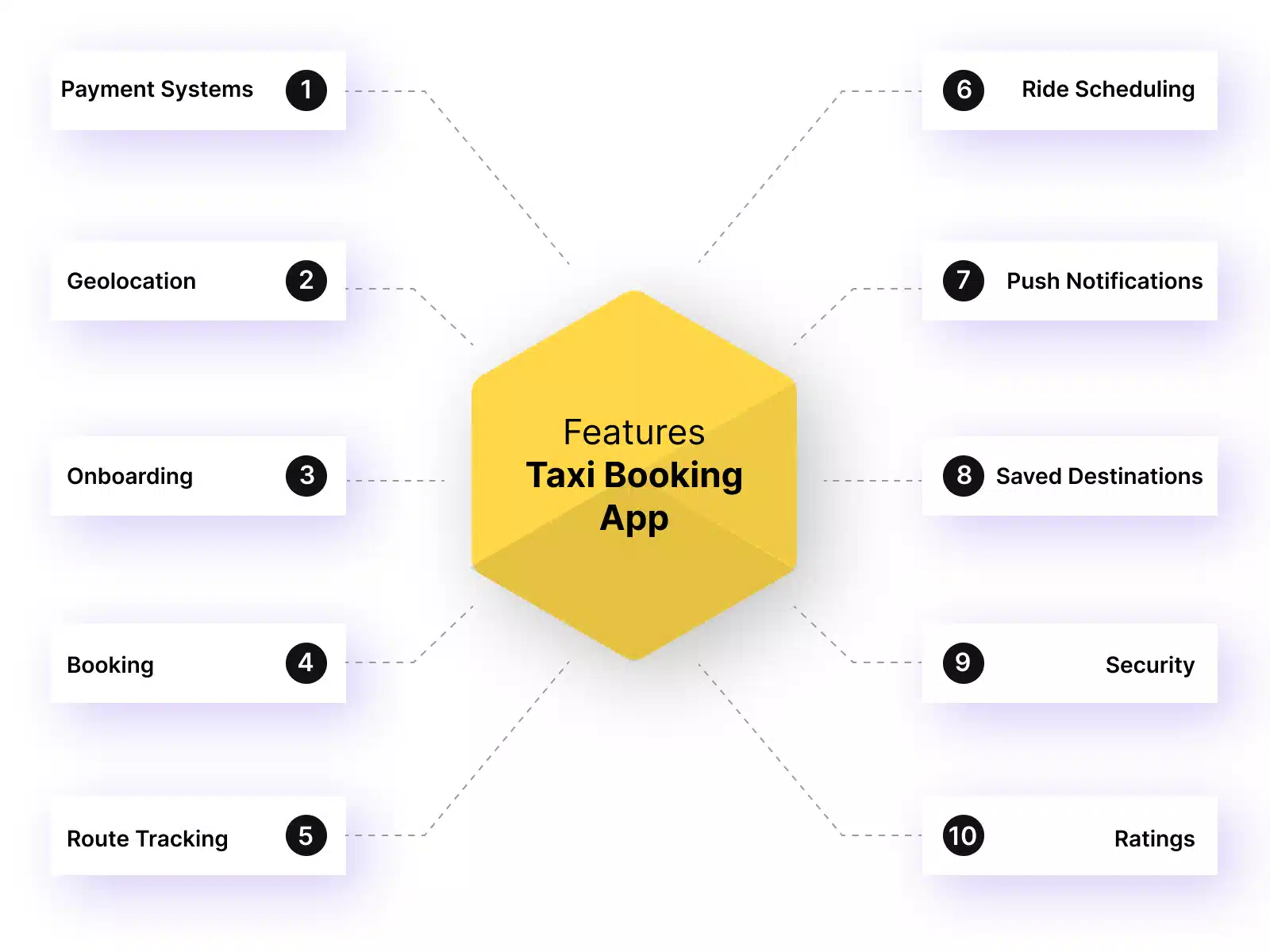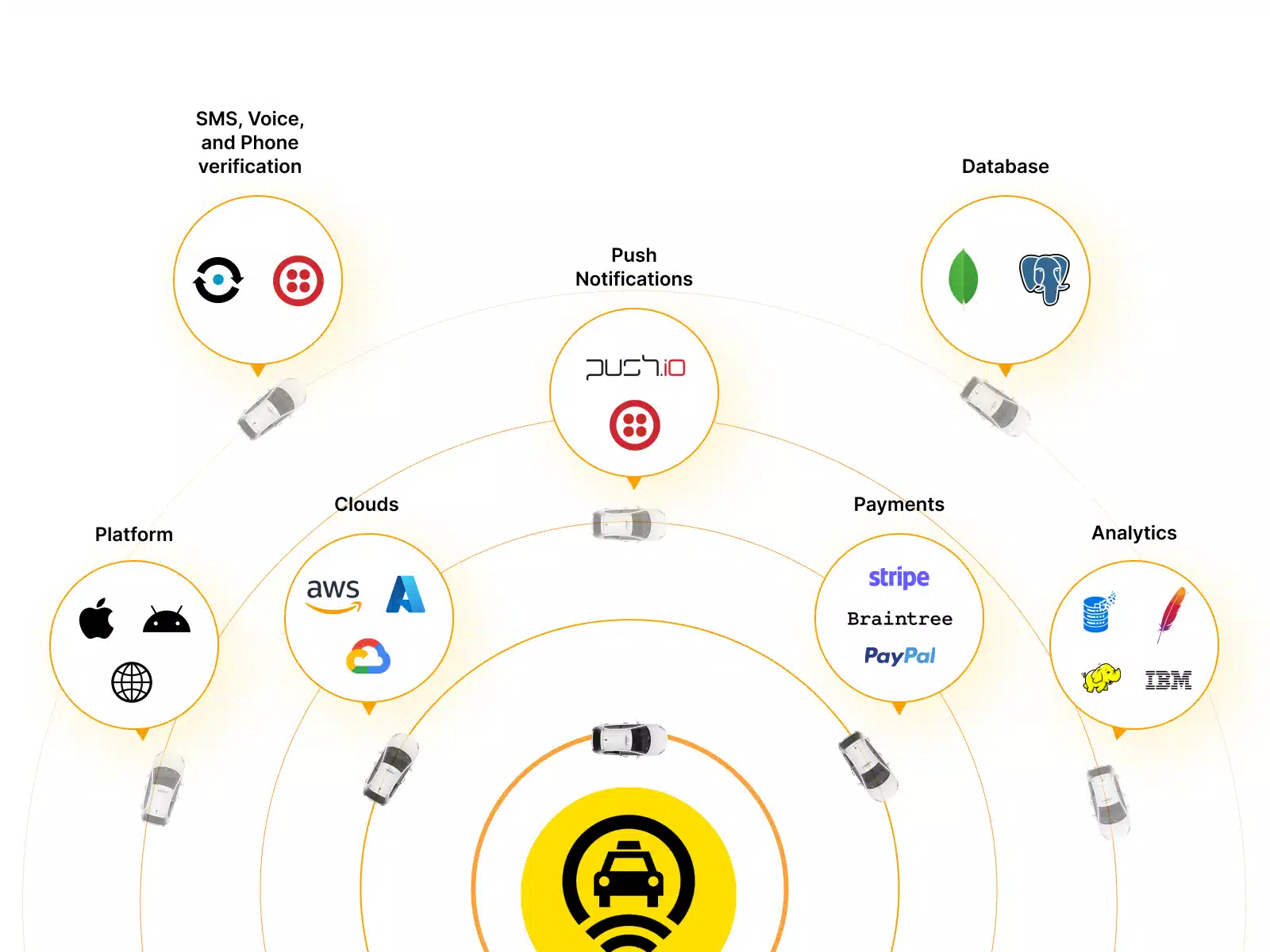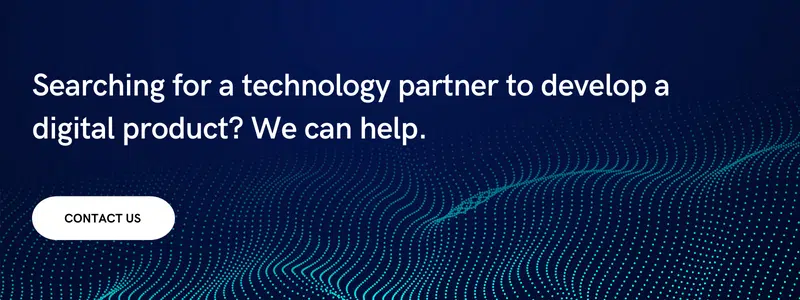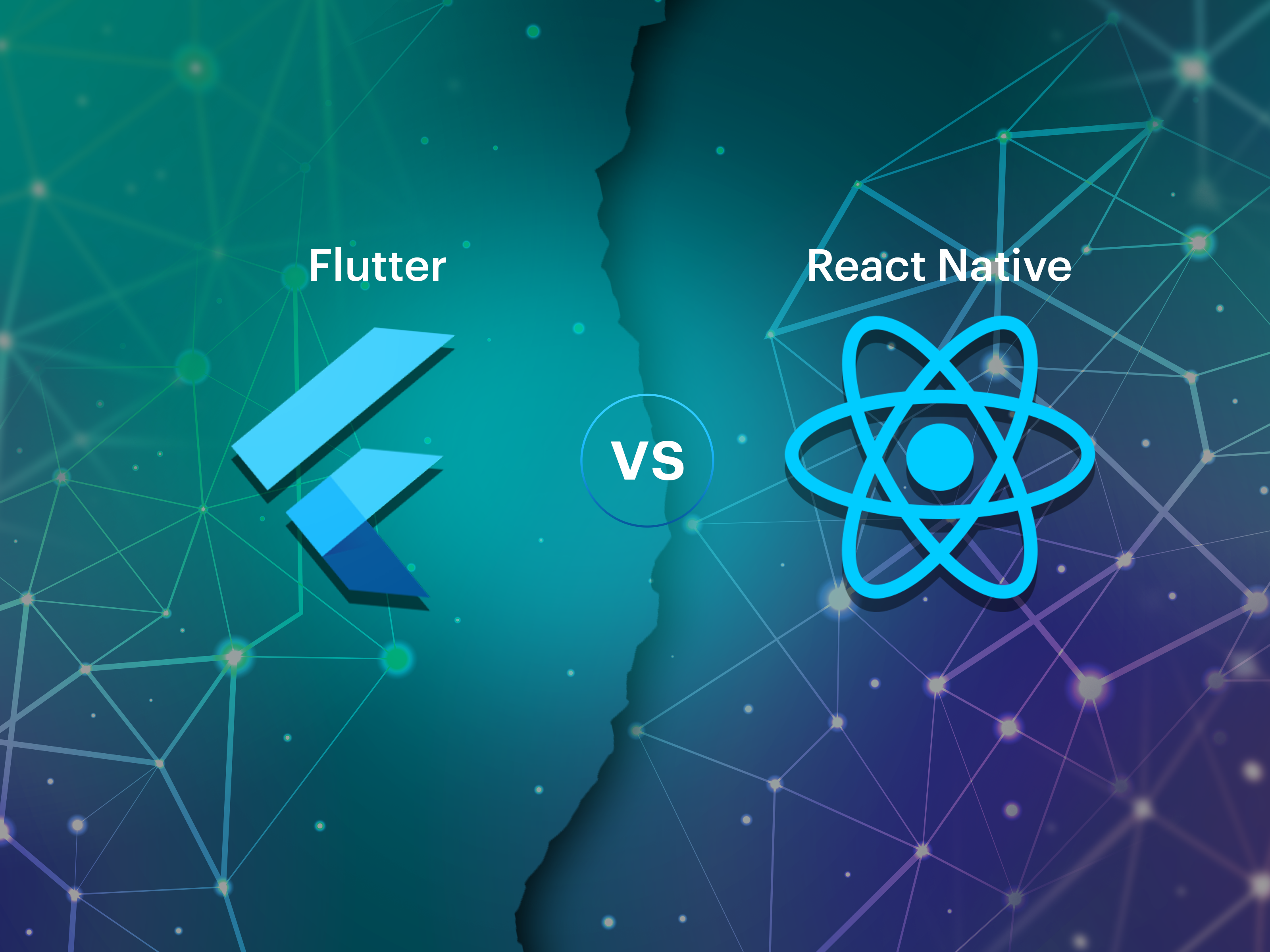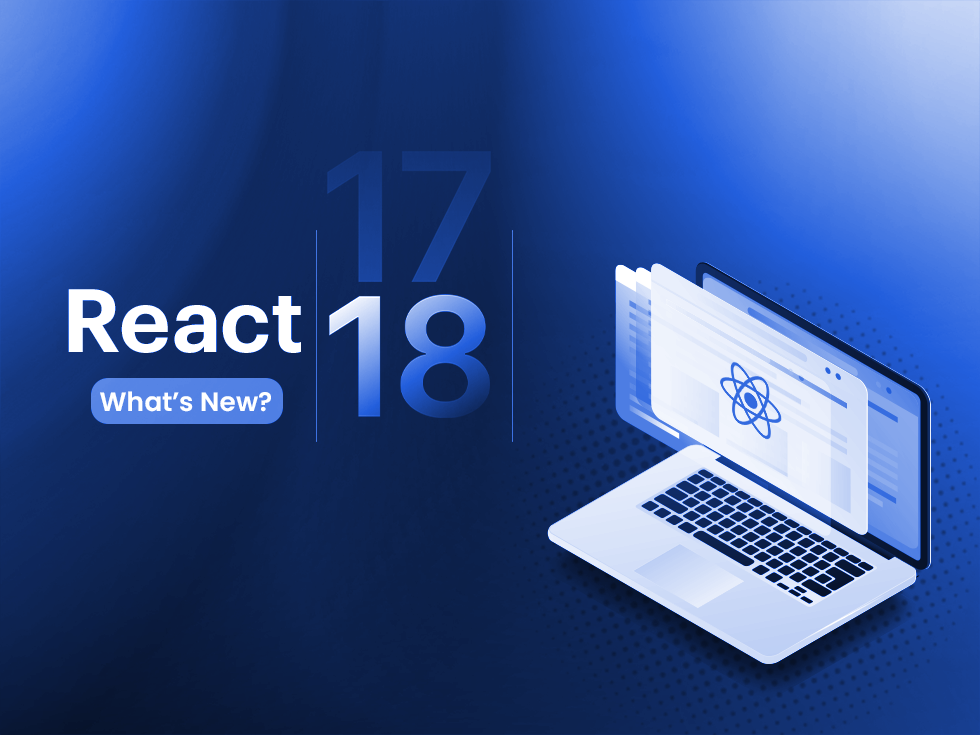Taxi App Development: Introduction
Taxi booking app is a booming industry and the talk of the town. Well, can you visualize your life now without the presence of these Taxi Booking Rental Apps? The tremendous boost of online cabs is prompting entrepreneurs to consider taxi app development.
According to the report from The Business Research Company, the global online taxi services market has grown from $31.03 billion in 2021 to $34.82 billion in 2022 at a Compound Annual Growth Rate (CAGR) of 12.2%. The online taxi services market is expected to grow at a CAGR of 11.3% to $53.48 billion in 2026.
In simple terms, there is plenty of rivalry in the taxi sector. One essential thing to keep in mind is that your app should be capable of standing out from the competition. Therefore, a trustworthy taxi booking app development company is an additional factor contributing to the victory of a taxi app solution. A software development enterprise must know about taxi app development and its associated technologies.
In this blog, you will discover their business prototyping and critical features in the taxi app solution.
Types Of Taxi Apps
Taxi booking apps like Uber are a technology platform for users and mobility. For Business, Uber is implied for employees, employers, customers, clients, and all teams in a company. But the question is, what key components need to be evaluated while developing an app like Uber?
So, if you want to create an attention-getting taxi mobile application, you have to develop two separate apps, which will be linked to the same admin panel. It includes:
Passenger App
The passenger-based application is a custom app that is a must-have user-friendly, and easy taxi app. Enterprises should incorporate features into the app, including user registration, profile management, booking a ride, geolocation, location fare calculation, driver information, payments, messaging, taxi information, driver ratings and reviews, ride-sharing buttons, online customer support needed, and many more.
Driver App
The Driver App allows drivers to make in-booking acceptance or cancellation requests by the passenger through the customer application. Some of the essential features in the driver application include registration, profile management, GPS, push notification, ride history, driver rating, route optimization, customer details, and online support via call or message.
Also, there is an admin panel designed by your taxi booking app development company to inform stakeholders about your ongoing, scheduled jobs and rides, process payments, issue refunds, driver’s earnings, total business income, provide custom discounts, etc. The AI-powered analytics dashboard lets individuals consider detailed insights, generate reports, and better forecast sales.
Taxi App Development: 10 Must-Have Features
While taxi app development, the below sections are critical to its success. Let us take a brief look and learn about them separately.
1. Payment Systems
On the technical side, the payment method of the app is the most crucial feature. There should be no problem making payments to the customer for direct advance payment for travel; mobile wallets, banking, and physical cash should be available to all customers. Taxi booking app development company must integrate an in-app payment gateway using the most desired payment option.
2. Geolocation
The GPS-enabled taxi application will allow passengers to show their spot to drivers by turning on Location on their smartphone. It enables drivers to find pick-up and drop points quickly. Passengers can also track their taxi after booking, thus making it a user-friendly interface.
3. Onboarding
You must first enable this feature to use the Taxi app. Then, at the click of a button, passengers and drivers can log in and register on the app. There will be two options for login, first, enter the information manually, and second, use a social networking website that provides a one-time password.
In addition, there will be a function available to drivers when they are known to work. Drivers can log in for rides, accept or decline their bookings, and log out after accepting or rejecting them.
4. Booking
Permits users to book a taxi with a swipe or slider. It adds up to a friction-free app background. Plus, it allows drivers to respond to a trip request with a single touch by providing a matching feature.
5. Route Tracking
This feature allows the users to scan the route during their taxi ride. Users can constantly monitor their whereabouts in their taxis, offering them satisfaction while traveling in a safe environment. Customers can end the journey if they find that they are traveling by another route and can report the incident to the administrator.
6. Ride Scheduling
This facility allows customers to book taxi services in advance. Customers will need to enter the time and location; a driver will be assigned based on the details entered after the booking. A confirmation email will be sent to the user’s email after booking.
7. Push Notifications
Customer Relationship Management (CRM) is a system where push notifications are accessible. In addition, alert notifications and messages are reached to users, potential customers, and drivers.
Plus, they let admins communicate with their panel members about special discounts and plans that make customers happy.
8. Saved Destinations
This feature allows users to save the places they frequently visit and use them later. For example, if they often travel from office to home and home to office, they can keep it with their names.
9. Security
Every detail comes when you book a taxi, such as a driver’s name, phone number, and taxi number shown on the app. It helps to make sure the proper driver arrives to pick you up. So you don’t have to worry while traveling with a stranger.
10. Ratings
This feature benefitted both passengers and drivers. Passengers can give ratings according to their ride experience. On the same, the driver can also provide the rating of his customer in terms of his behavior. You can give your review in writing and numeric or star form rating type.
Taxi App Development: Tech Stack
When it comes to online taxi booking apps, the technological requirements can be broken down into the following key components:
1. The Backend Of A Taxi Booking Mobile App
The backend is a centralized mechanism that lets the server, middleware, and database link your taxi application. Technologies that build the app’s backend are here below:
- Java
- Python
- Go
- Swift
RIBs or routers, interactions, and builders are operated in native taxi booking apps based on Android and iOS platforms to simplify enterprise logic.
2. The App Development For IOS/Android Platforms
A taxi booking app development company often plans to develop an online booking or any other face difficulty selecting the right mobile app development platform. With Android and iOS being the most predominant platforms, the choice between these two. However, the dilemma should be solved. Instead, businesses should develop apps for both platforms to get all the user base.
Some soundest tech considerations include:
- Nexmo, Twilio – SMS, Voice, and Phone verification
- MongoDB, PostgreSQL – Database
- Twilio Push.io – Push Notifications
- AWS, Azure, Google – Clouds
- Stripe, Braintree, PayPal – Payments
- Big Data, Apache, IBM, Hadoop – Analytics
- Android, iOS, Web – Platform
3. App Design
We must start designing the actual structure before creating its design. App designers understand and structure according to the need of customers. Undervaluing the significance of app design is the worst thing that can affect Business. Mobile app design is usually interconnected with two parts of the app:
- User experience (UX) – depicts how users interact with your app and set up app screen layouts.
- User interface (UI) – It depicts how the app and associated elements will look for end-users and what colors the app will use.
How Does A Taxi App Like Uber Work?
A typical taxi app consists of three interconnected parts – a driver app, a passenger app, and an admin panel for business management operations. Following are the steps to be followed while booking a taxi.
Passengers Panel
- Enable Location Services on your smartphone·
- First Sign-up/Social Login
- Create and sustain the profile
- On-demand taxi booking elements
- View expected waiting time for taxi coming
- Real-time taxi tracking
- Amenable billing and payment options
- Push Notifications, SMS alerts
- View cab and rates choices
- Schedule bookings
- Auto-generated fare
- Payment via in-app wallet
- View taxi booking history
Driver Panel
- Update your status for customers
- Accept/Deny customers booking requests
- Push notifications
- In-app chat and call with Passengers
- Live map navigation
- View ratings and reviews
- Automated fare estimate
- Check travel routes
- Accept offline/online payments
Admin Panel
- View/Manage panel users
- Manage taxi availability and scheduling
- View trip routes
- Manage prices and rate card
- Manage offers and deals
- Tracking of cabs
- View/Manage feedback and reviews of drivers
- Generate day-to-day reports for transactions and revenues
- Manage geolocation border
Taxi App Development: How Can Markovate Help
At Markovate, we have a highly professional software development team. Our team developed an app (Trapeze) to provide the best schedules for passengers with real-time scheduling of transits.
We offer you an opportunity to build a taxi booking application that will be highly dynamic, responsive, and customer-centric. We employ promising technologies to set new trends in taxi dispatch with a fully automated taxi management system.
Taxi App Development: FAQs
1. How much is the cost to develop a cab booking app?
Depending on the region, the development cost will differ. However, on average, the total cost to develop a taxi booking app with basic features will be around $40,000 to $50,000. Total taxi app development costs may increase according to the added features and complexity of the app.
2. How long does it take to make a cab booking app?
It takes around 4-6 months to develop an MVP or initial version of a mobile cab service that operates on a single mobile platform (iOS or Android). It includes the passenger app, driver app, admin panel development, and backend development.
3. What is the key advantage of a taxi booking app?
Taxi Booking App Development Company through its taxi app, offers the benefits of:
- Expand the reach of your organization
- Enhance the Public Image of Your Organization
- Raise the number of existing customers
- Profit
- Clarity in Communications

I’m Rajeev Sharma, Co-Founder and CEO of Markovate, an innovative digital product development firm with a focus on AI and Machine Learning. With over a decade in the field, I’ve led key projects for major players like AT&T and IBM, specializing in mobile app development, UX design, and end-to-end product creation. Armed with a Bachelor’s Degree in Computer Science and Scrum Alliance certifications, I continue to drive technological excellence in today’s fast-paced digital landscape.

